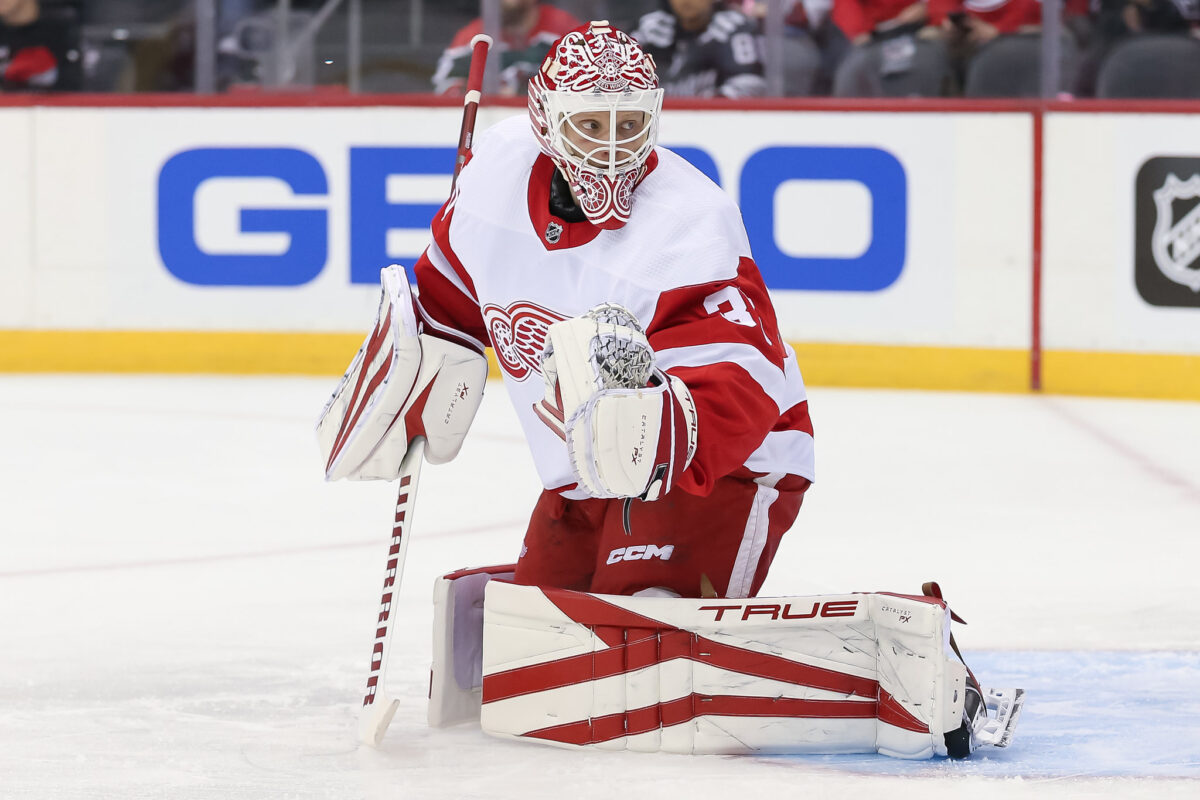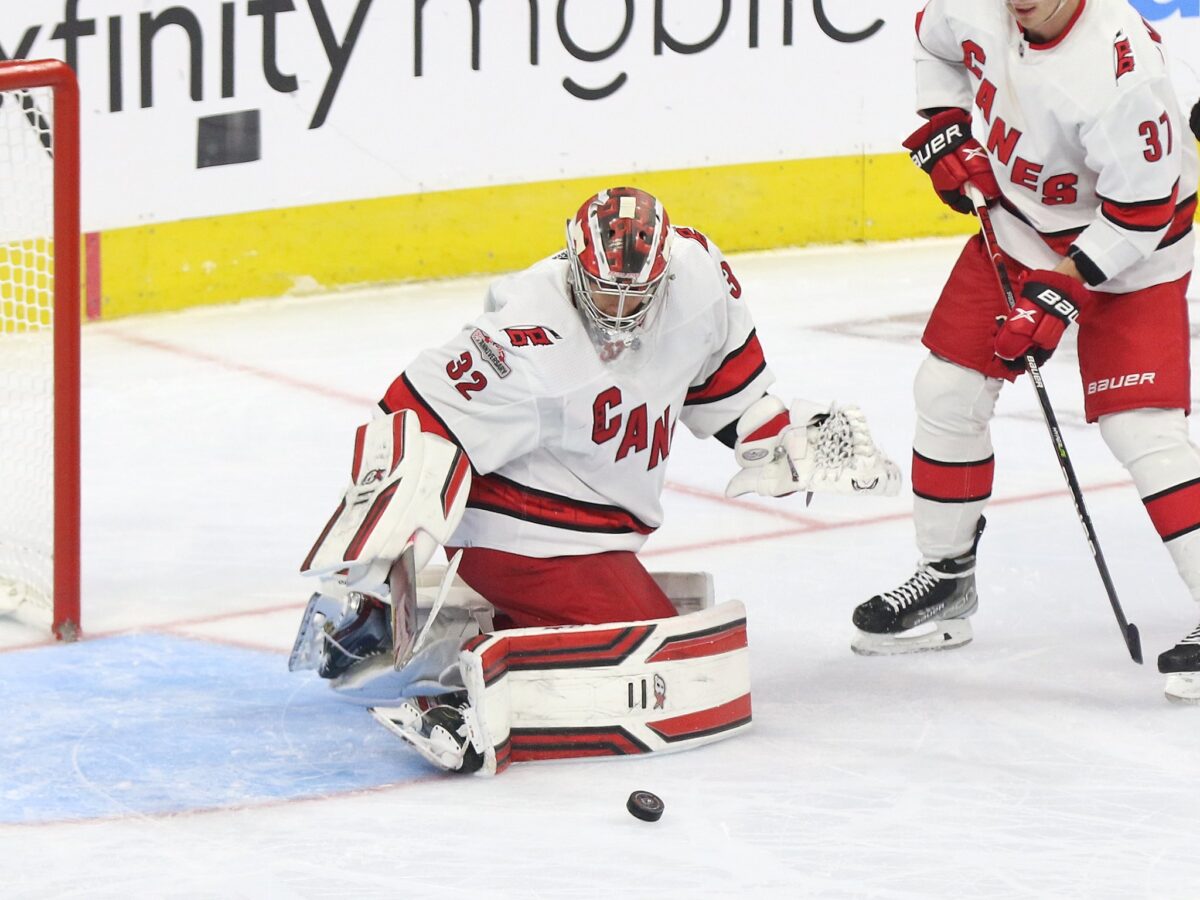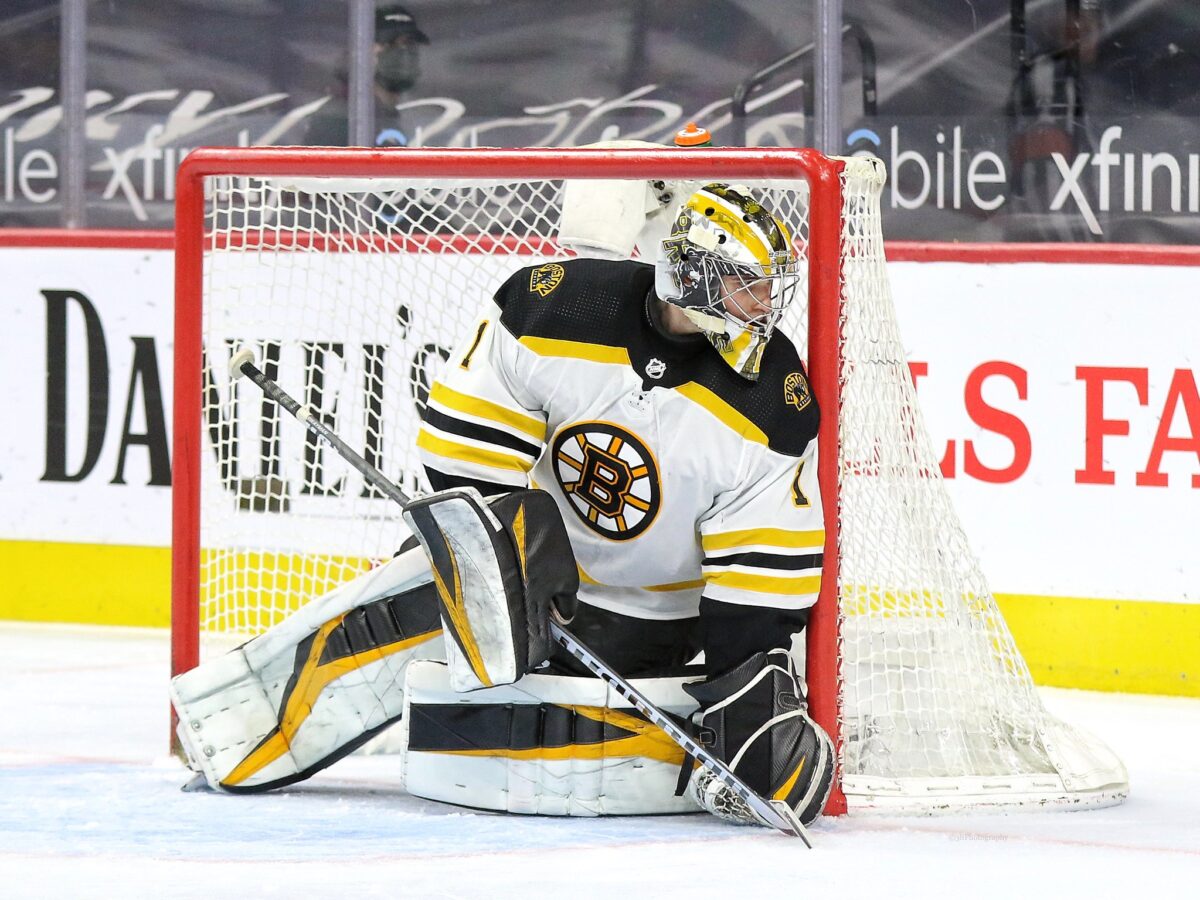Goaltending was one of the least consistent aspects of the Detroit Red Wings 2022-23 season. There would be stretches of three to four games of good goaltending followed by even longer stretches of average to below average.
Related: Red Wings’ 3 Missing Pieces To Contend For The Stanley Cup
Steve Yzerman has a decision to make. Does he re-sign Alex Nedeljkovic or pursue another option? Does he bank on Nedeljkovic bouncing back or cut ties and talk to players who are more consistent? I favor the latter, as there will be good options available that are an upgrade in net.
Husso & Nedeljkovic
Before looking at who could be an upgrade, let’s see where the upgrade is needed. I mentioned Nedeljkovic off the hop because of his expiring contract, but let’s take a look at the numbers for Ville Husso and Nedeljkovic. For our purposes, we will look at games played (GP), quality starts (QS), wins (W), goals against average (GAA), save percentage (SV%), quality start percentage (QS%), even strength save percentage (EVSV%) and shutouts (SO).
| Player | GP | QS | W | GAA | SV% | QS% | EVSV% | SO |
| Husso | 56 | 26 | 26 | 3.11 | 896 | 45.4 | 903 | 4 |
| Nedeljkovic | 15 | 5 | 5 | 3.53 | 895 | 33.3 | 906 | 0 |
The first thing to keep in mind is the relatively small sample size of Nedeljkovic’s body of work this year. Despite that, his SV% and EVSV% are on par with Husso. Husso however, has a better QS%. A quality start is a game where the goaltender’s SV% was league average or higher. Even strength save percentage is just the save percentage that the goaltender had while playing at even strength. With that in mind, I draw two conclusions. One, across the entire season, their body of work is similar. Two, Husso was way more consistent while Nedeljkovic had really good games and really terrible games. Consistency is key over an 82-game season. When you factor in his lack of consistency with an expiring contract, that tells me Nedeljkovic is the odd goalie out.

Looking at a replacement requires getting a baseline of what a playoff calibre goaltender is like. The NHL is moving closer every year to a true tandem setup for team goaltending. Let’s look at the regular season results for the goalies with the highest GP on their respective teams.
| Player | GP | QS | W | GAA | SV% | QS% | EVSV% | SO |
| Stuart Skinner | 50 | 29 | 29 | 2.73 | .914 | 58 | .924 | 1 |
| Jake Oettinger | 62 | 38 | 37 | 2.35 | .919 | 61.3 | .923 | 5 |
| Sergei Bobrovsky | 50 | 30 | 24 | 3.07 | .902 | 60 | .916 | 1 |
| Martin Jones | 48 | 20 | 27 | 2.95 | .887 | 41.7 | .898 | 3 |
| Logan Thompson | 37 | 20 | 21 | 2.65 | .915 | 54.1 | .923 | 2 |
| Ilya Samsonov | 42 | 26 | 27 | 2.33 | .919 | 61.9 | .924 | 4 |
| Frederik Andersen | 34 | 17 | 21 | 2.48 | .903 | 50 | .908 | 1 |
| Vitek Vanecek | 52 | 32 | 33 | 2.45 | .911 | 61.5 | .915 | 3 |
Martin Jones sticks out like a sore thumb in this group. He is the only sub-50 QS%, .905 EVSV%, .900 SV% goaltender on the list. Philipp Grubauer only started 38 games due to injuries, but had better numbers than Jones. Grubauer had a 56.4 QS%, .905 EVSV%, and .895 SV%. These numbers are more in line with what we see from the other starters.
The QS% and the EVSV% seem to be the most common markers of a good goaltender. In looking for a Nedeljkovic replacement, we will focus on those two statistics as well as others here and there when they feel relevant.
Antti Raanta
In the 2022-23 regular season Raanta sported a .923 EVSV%, a 48.1 QS%, and a .910 SV%. With Andersen’s numbers above we saw that his QS% was exactly 50%. The Hurricanes are one of the best teams at limiting shots on their goaltenders. Because of this, their save percentage can inflate one way or the other. In Raanta’s case, I’d lean towards believing the EVSV% more than the QS%. In his 10-year career, Raanta has had a sub-.910 EVSV% twice. Once during his rookie year and the second time was during his last year in Arizona (the 2020-21 season).

Is he better suited for a tandem setup or can he take the starter’s role and excel? In 2017-18 Raanta started 47 games and had a 63.8 QS% and a .935 EVSV%. With an increased workload he has shown he can maintain his impressive numbers. He has had a few injury-laden years, but he’s been fairly healthy since donning a Hurricane sweater. With some recent playoff starting goalie decisions, the Hurricanes could be showing us who they prefer to keep.
Adin Hill
Another good budget-friendly option for the Red Wings would be Adin Hill. He is coming off a two-year $2,175,000 contract. He has been in the league for six years but has never played more than 30 games in a single year. He hit a career-high in games played with 27 this year. In the past four seasons, his EVSV% has been .933, .913, .918, and .918 respectively.
This season he had a .918 EVSV% and a 59.3 QS%. If he played twice the games, we could be talking about a potential top-10 goalie in the NHL. He’s been very consistent for the past four years. The quality starts are finally up there, so he’s found some consistency in his game. The Vegas Golden Knights might re-sign him, or he might try to get a starter’s job elsewhere.
Jeremy Swayman
If there was any way for Yzerman to convince Jeremy Swayman to sign with the Red Wings, he’d better explore it. I don’t think a lot of people realize just how good Swayman is. He sported a .926 EVSV%, a 56.8 QS%, and a .920 SV% in 2022-23. He played 37 games this year and 41 last year.

Unfortunately, Swayman is a restricted free agent (RFA) this offseason, so the only way the Red Wings could sign him is either via trade or offer sheet. They definitely have the picks available to send to the Boston Bruins. He is also 24, so chances are that the Bruins will try to keep both him and Linus Ullmark. But if a first or second-round pick plus a Carter Mazur or Elmer Soderblom gets a deal done, I’d do that in a heartbeat.
There may be more goalies who fit this profile, but I believe these three are the best options to help the Red Wings fix their goaltending problems. If they let Nedeljkovic walk and sign/trade for one of these goalies, I’d be pretty happy with that.
